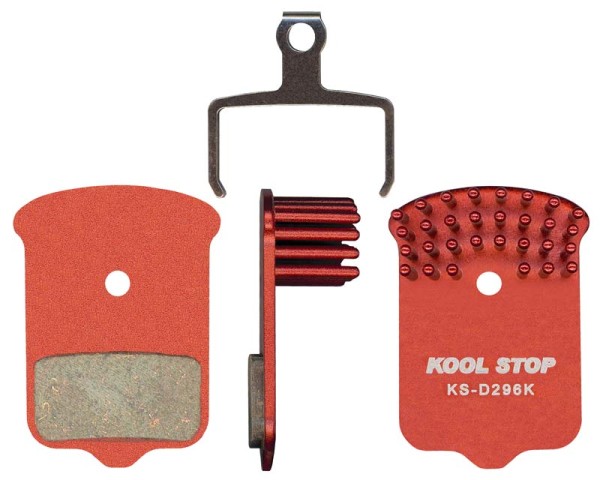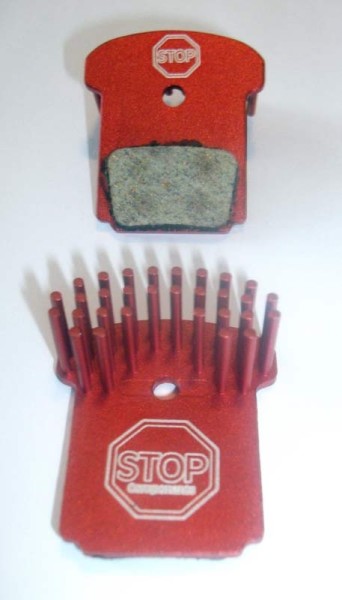Remember those crazy pegged/finned brake pads Alligator showed off at Eurobike last year? Now they’re available in North America as a less expensive alternative to Shimano’s Ice Tech pads, with options for a much wider list of models and brands.
A few months back, Ryan from Lbs. Bikes contacted us about a second company he set up to sell the finned brake in Canada (and the US). Called Stop Components, he built it to sell a wide variety of brake pads for virtually every brand out there at a very competitive $CAD price. And just this week, Kool-Stop branded the same ones for US and UK sales, calling them Aero Kool.
Both share the same design, made in the same Asian factory, using the same alloy back plates and organic resin compound. And both are the same red Alligator showed off. The difference? Branding and US pricing, really.
Stop in past the break for the tech details and a little explanation why so many brands are offering them…
Four versions are on offer:
- Style 1 – Avid Elixir
- Style 2 – Formula – R1, The One, RX, Mega
- Style 3 – Shimano – M985, M785, M666
- Style 4 – Shimano older style Saint M800, XT M765, XTR M965/966, M975, M765, M585, Hone M601, XT 2004, M665. Also fits TRP DASH.
Word is Magura has licensed their own pads from the manufacturer, which is why you don’t see Magura options here. They didn’t show up on the latest calipers, though, so perhaps they’re tucking it away for future models.
The back plates are hardened aluminum alloy, so they are very light, with a ceramic organic resin compound. Melnyck says they can’t do a sintered compound because the sintering process creates so much heat that back plate basically is just short of melting, which would leave it very brittle.
Stop Components’ pads retail for $36CAD and include alcohol wipes to clean the pads and rotors. Kool Stop’s $32.50USD suggested retail price works out about the same after the conversion from CAD to USD. Weights per pair (as in, left/right, not front and back sets) are around 22g.
So, why do two brands have the exact same product for the same market? Well, private labeling isn’t uncommon, but this is what happened here: Kool Stop, which is a larger, more established global brand, owns some of the tooling used by the Asian manufacturer, but not all of it. So, the manufacturer makes the pads and sells them to several companies, in this case with no apparent territory exclusivity. So, pick your favorite, or just order from whoever’s more convenient from a shipping standpoint. Or support the little guy (Stop Components). Or ask your local bike shop to order some (from Kool Stop). Decisions, decisions.

